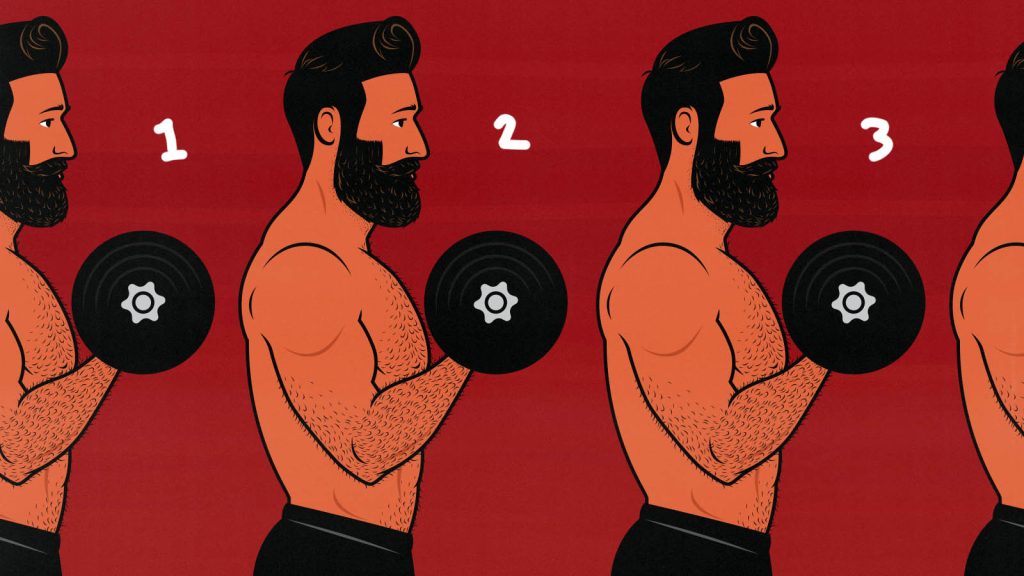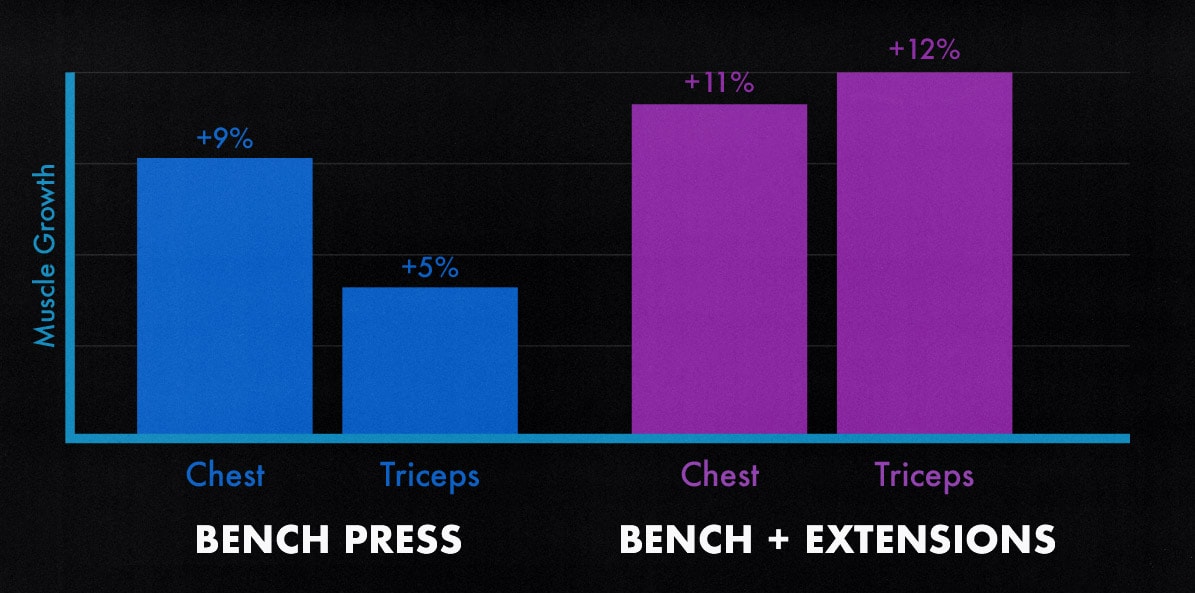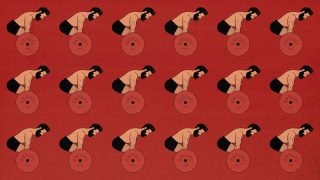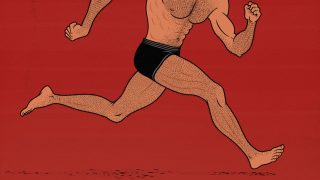
What is Training Volume?
With weight training, training volume is how many hard sets you do per muscle per week. For example, if you do 5 sets of bench presses, 5 sets of push-ups, and 5 sets on the pec deck machine, that’s a weekly training volume of 15 sets for your chest.
The idea of counting hard sets comes from Nathan Jones, and it was popularized by Greg Nuckols in an article on Stronger by Science. It gives you a way to quickly tally up your weekly training volume, and it correlates extremely strongly with muscle growth, making it perfect for building muscle. The definition caught on with bodybuilders and became standard. You’ll even find it in the newer training volume studies (study, study).
If you go digging through older research, you’ll find a second definition: how many pounds you lift per movement pattern per week (sets × reps × weight). For example, if you bench 225 pounds for 5 sets, that’s a training volume of 1,250 pounds. That can be helpful to track sometimes, but it isn’t very good for tracking how much muscle growth you’re stimulating. It’s really useful when trying to figure out how many reps you should do per set, though.
What Counts as Training Volume?
If a set brings a muscle close to failure, it counts toward your training volume for that muscle. That also means warm-up sets don’t count. Easy sets don’t count. Stretching doesn’t count.
It gets trickier. Push-ups work your chest, shoulders, triceps, and abs, but they don’t bring your abs very close to failure, so you probably wouldn’t count them as a set for your abs. If your shoulders or triceps aren’t brought close to failure, you wouldn’t count them either.
If you look at deadlifts, though, they work your hips, hamstrings, and back muscles. Those back muscles—especially the postural ones—usually get worked quite hard, so you’d count them as sets for your back. If your back isn’t worked hard, though, then you wouldn’t.

Some exercises are better for some muscles than others. For example, the bench press is about twice as good for your chest as for your triceps (study). However, that’s mainly because it only brings the short heads of your triceps close to failure. You can fix that by doing exercises that bias the long heads, such as skull crushers or overhead triceps extensions. That means you might want to consider your training volume for individual muscle heads.
You might also want to consider how much muscle growth an exercise stimulates per set. Romanian deadlifts stimulate a tremendous amount of muscle growth per set for your hamstrings, so you don’t need to do very many sets. However, lateral raises don’t stimulate very much muscle growth for your side delts, so you might need a higher training volume (or a better way of doing lateral raises).
If you want to learn more about how many sets to do, I wrote up a big guide here. We also have a full guide on hypertrophy training here.






Great article. In my younger years I rarely got straight answers about how many sets people were doing because people reported warm up sets as well. Newer concepts/practices like RIR towards failure really tell the story. These used to be called “work” sets.
Yeah, that’s exactly it. That term is still used. You only count work sets towards your weekly volume.